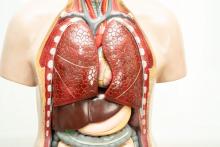Recent Publications

Mervyn S Jaswon: Urine collection methods and dipstick testing in non-toilet-trained children (Pediatr Nephrol .)
Urinary tract infection is a commonly occurring paediatric infection associated with significant morbidity. Diagnosis is challenging as symptoms are non-specific and definitive diagnosis requires an uncontaminated urine sample to be obtained. Common techniques for sampling in non-toilet-trained children include clean catch, bag, pad, in-out catheterisation and suprapubic aspiration. The pros and cons of each method are examined in detail in this review.
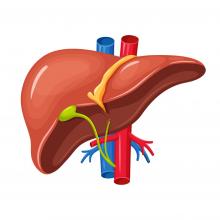
Wisam Sbeit, Anas Kadah, Amir Mari, Tawfik Khoury: A Comprehensive Narrative Review on the Evolving Role of Endoscopic Ultrasound in Focal Solid Liver Lesions Diagnosis and Management (Diagnostics (Basel) .)
The implications of endoscopic ultrasound (EUS) have expanded considerably in recent years to cover more fields in invasive gastroenterology practice, as both an investigative and therapeutic modality. The utility of EUS in the diagnosis and management of focal liver lesions has gained a special attractiveness recently. The EUS probe proximity to the liver and its excellent spatial resolution enables real-time images coupled with several enhancement techniques, such as contrast-enhanced (CE) EUS. Aside from its notable capability to execute targeted biopsies and therapeutic interventions, EUS has developed into a hopeful therapeutic tool for the management of solid liver lesions. Herein, we provide a comprehensive state-of-the-art review on the efficacy and safety of EUS in the diagnosis and management of focal solid liver lesions.

Lilach Malatskey: A nationwide assessment of lifestyle medicine counseling: knowledge, attitudes, and confidence of Israeli senior family medicine residents (BMC Fam Pract . )
Non-communicable diseases are the leading causes of death, largely due to the last century's often-unhealthy lifestyles. Family medicine (FM) and other physicians can improve patients' lifestyle behaviors, yet FM residency programs in Israel and other countries do not uniformly deliver lifestyle medicine (LM) training. The readiness of FM residents to counsel on lifestyle issues is not known. The purpose of this study is to assess knowledge, attitudes, and confidence levels of senior Israeli FM residents regarding LM counseling, and to evaluate the influence of LM training and personal health behaviors on residents' LM knowledge, attitudes, and confidence.
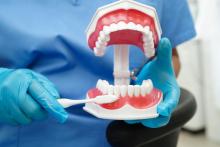
Wisam Sbeit, Anas Kadah, Hala Karayanni, Amir Mari, Shani Tali, Samer Srouji, Tawfik Khoury: Oral manifestations of inflammatory bowel disease: the neglected piece of the puzzle (Eur J Gastroenterol Hepatol .)
Inflammatory bowel disease (IBD) is a chronic relapsing remitting autoimmune disease including Crohn's disease and ulcerative colitis. IBD is associated with various extra-intestinal manifestations including oral manifestation. To date, only limited studies addressing the characteristics of the oral manifestations are available. The aim of the present review is to report the oral manifestations and their characteristics in IBD.

Vikrant Palande, Dorith Raviv Shay, Milana Frenkel-Morgenstern: Detection of Cell-Free DNA in Blood Plasma Samples of Cancer Patients (J Vis Exp .)
Identifying mutations in tumors of cancer patients is a very important step in disease management. These mutations serve as biomarkers for tumor diagnosis as well as for the treatment selection and its response in cancer patients. The current gold standard method for detecting tumor mutations involves a genetic test of tumor DNA by means of tumor biopsies. However, this invasive method is difficult to be performed repeatedly as a follow-up test of the tumor mutational repertoire. Liquid biopsy is a new and emerging technique for detecting tumor mutations as an easy-to-use and non-invasive biopsy approach....In this manuscript, we present a detailed protocol for liquid biopsy, including blood collection, plasma, and buffy coat separation, cfDNA and germline DNA extraction, quantification of cfDNA or germline DNA, and cfDNA fragment enrichment analysis.

Avi Benov, Kaykov Edward: Compassionate use of convalescent plasma for treatment of moderate and severe pneumonia in COVID-19 patients and association with IgG antibody levels in donated plasma (EClinicalMedicine .)
We assessed outcome of patients with moderate and severe COVID-19 following treatment with convalescent plasma (CP) and the association with IgG levels in transfused CP.

Amir Hadanny: The outcome of intracranial meningioma surgery in octogenarians: matched cohort study (World Neurosurg .)
Previous studies comparing the outcomes of intracranial meningioma surgery in octogenarians compared to younger patients without accounting for different tumor locations and sizes. The aim of the current study was to evaluate the outcomes of intracranial meningioma surgery in octogenarians taking into account both patient pre-operative status, comorbidities as well the tumor properties.

D Karasik: Genetic Pleiotropy of Bone-Related Phenotypes: Insights from Osteoporosis (Curr Osteoporos Rep .)
We summarize recent evidence on the shared genetics within and outside the musculoskeletal system (mostly related to bone density and osteoporosis).

Netanel Eisenbach, Rozeen Abu Shqara, Eyal Sela, Randa Yawer Hana, Maayan Gruber:The effect of an interventional program on the occurrence of medication errors in children (Int J Pediatr Otorhinolaryngol .)
Medication errors in hospitalized children represent a serious health problem; these include dosing errors, administration route errors, errors in identifying the patient and more. The rates of medication errors are considered higher in children compared to adults because, among other reasons, the pediatric dose is calculated according to the child's weight or body surface. This study aims to examine the incidence of pediatric medication dosing errors and the impact of an intervention program in reducing these errors and related adverse effects in a cohort of hospitalized children at an otolaryngology department.

Omry Koren: First trimester biomarkers for prediction of gestational diabetes mellitus (Placenta .)
Develops a first trimester prediction model for gestational diabetes mellitus (GDM) using obesity, placental, and inflammatory biomarkers.
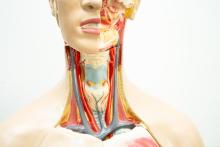
Amir Bashkin, Jalaa Abu Ali, Mona Shehadeh, Lea Even, Ohad Ronen: The significance of high thyroxine in hospitalized patients with low thyroid-stimulating hormone (Endocrine .)
There is scarce data about the interpretation of high thyroid hormone levels in hospitalized patients. We wished to investigate the significance of high thyroxine (T4) in hospitalized patients with low TSH.
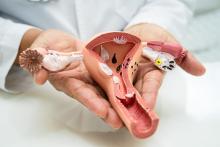
Inbar Ben Shachar, Ilan Atlas: Is the extent of pelvic lymphadenectomy in the staging of endometrial cancer associated with the yield of metastatic nodes? An Israeli Gynecologic Oncology Group study (Surg Oncol .)
Explores correlation between the extent of pelvic lymphadenectomy in the surgical staging of endometrial cancer and the number of nodes with metastasis. Evaluates survival measures in relation to the number of excised nodes.

Amiel A Dror, Netanel Eisenbach, Tal Marshak, Eli Layous, Asaf Zigron, Ohad Ronen, Samer Srouji, Eyal Sela: Reduction of Allergic Rhinitis Symptoms with Face Mask Usage During the COVID-19 Pandemic (J Allergy Clin Immunol Pract . )
The COVID-19 pandemic demanded widespread adoption of personal protective equipment (PPE) for viral transmission prevention. The prevalence of allergic rhinitis, ranging from 10-20% of the general population, together with extensive use of face masks during the pandemic, provided an opportunity to study the effects of face masks on rhinitis symptoms. We utilized questionnaire data to characterize Israeli nurses’ symptomatology while wearing face masks when working 8-12 hour shifts during the COVID-19 pandemic.
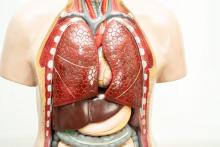
Karl Skorecki: Acute pyelonephritis in children and the risk of end-stage kidney disease (J Nephrol .)
Pyelonephritis is the most common serious bacterial infection during childhood. The long-term importance of kidney scarring is unclear. This study assesses the risk of end-stage kidney disease (ESKD) in adolescents and young adults with history of pyelonephritis.



